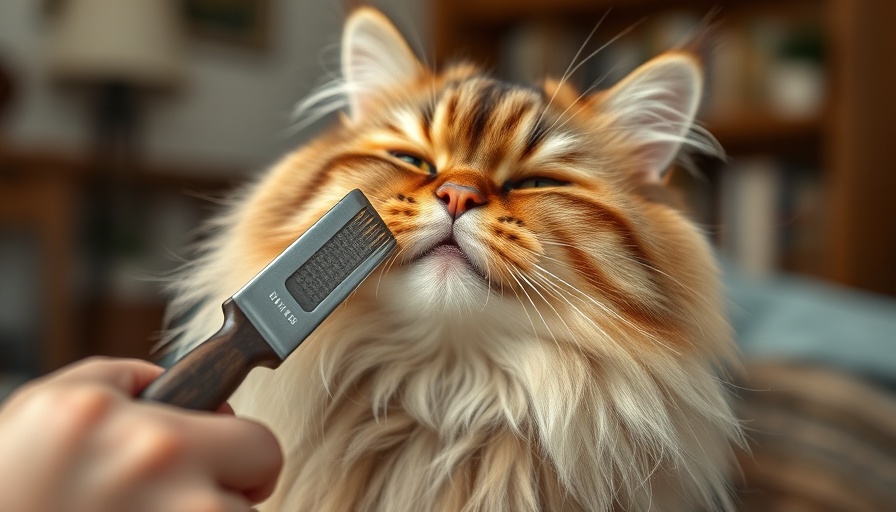
Understanding the Importance of Flea Care for Your Cat
As loving cat owners, we always aim to provide a safe and healthy environment for our furry companions. Flea infestations can severely impact a cat’s health and lead to discomfort that may go unnoticed. Regular flea care is essential: even if your feline doesn’t appear to have fleas, using a flea comb can be a preventive measure that shields your pet from the discomfort and health problems associated with fleas. Knowing the basic mechanics of using a flea comb can contribute significantly to your cat's overall wellness.
What Exactly Is a Flea Comb?
A flea comb is far more than just a grooming tool. It’s specifically designed to help remove fleas, eggs, and debris from your cat's fur. With short, thin, closely spaced teeth, the comb effectively traps fleas without the need for shaving your cat's lovely coat. The beauty of using a flea comb is that it caters to cats of all sizes and coat types—short-haired kitties can benefit from different combs than their long-haired friends.
How to Properly Use a Flea Comb on Your Cat
To ensure your cat enjoys the combing experience, proper technique is key. Start by untangling your cat's fur with a regular brush to make the process smoother. This step can help ease your feline into the process. Ideally, have someone hold your cat securely on your lap or gently constrain them, so they feel more comfortable. With the flea comb aligned with the direction of your cat's fur, slowly pull the comb through its coat, making sure to pay extra attention to areas that are hard to reach, like under the arms and underbelly.
Special Tips for a Calming Experience
If your cat expresses stress—perhaps through hissing, flattening their ears, or trying to escape—don’t hesitate to take a break. Allow your cat some time to regroup before continuing, as this can prevent injury and create a more positive experience overall. Once you finish each pass, immerse the comb in lukewarm, soapy water to ensure all captured fleas are dead; a gentle dish soap is typically effective, but it's best to consult with your veterinarian.
Checking Your Cat's Activity for Fleas
For different cat owners, checking for fleas can vary based on routine experiences and previous infestations. During active infestations, it’s advisable to comb your cat daily until the problem has resolved. For those with preventive measures in place and no active signs of fleas, checking once a week or even monthly can be enough. By incorporating a flea comb into your regular grooming schedule, you maintain a healthier and happier companion.
Overcoming Common Misconceptions About Flea Comb Usage
One prevalent myth is that flea combs are unnecessary if topical flea treatments are in use. While these treatments are highly effective, nothing beats the bonus of regular checking and grooming. This additional layer of protection can lead to early detection of any potential flea activity before it becomes an overwhelming concern. By remaining proactive, you not only care for your furry friend’s comfort but significantly reduce the risks associated with flea infestations.
Why Flea Combing Matters Beyond Flea Removal
Using a flea comb isn’t solely about finding and eliminating pests—it's an opportunity to bond with your feline friend. Your cat may derive comfort from personal attention, and this grooming time fosters trust and relaxation. Regular combing contributes to good hygiene, helping to prevent skin irritations while spreading natural oils in their coat for added shine.
Final Thoughts on Flea Care for Your Cat
In conclusion, the importance of using a flea comb for your cat cannot be overstated. Whether you are dealing with an active infestation or simply engaging in routine grooming, the benefits are plentiful. Cat owners are encouraged to incorporate flea combing into their regular pet care practices to enhance the overall quality of life for their beloved companions. Take the time to love and care for your pet, as they rely on us to provide a comfortable and caring environment.
 Add Row
Add Row  Add
Add 


Write A Comment